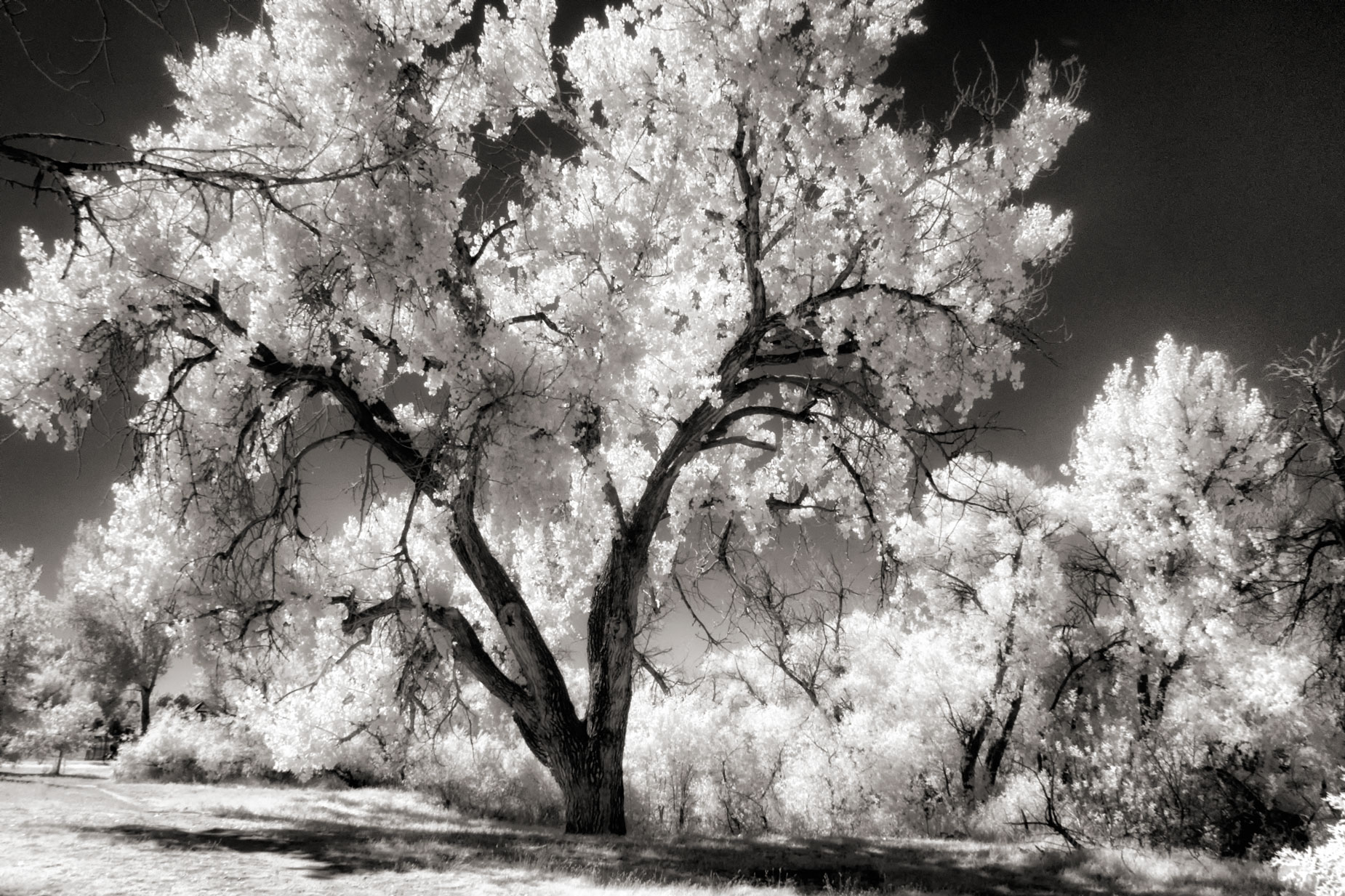Today’s Post by Joe Farace
October is the first month it typically snows in Colorado. There are an average of 2.8 snowfall days, and Denver typically receives 4.02″ of snow during the month.
Snow is expected sometime this month in my little corner of Colorado and all of the leaves that are currently barely hanging onto their trees may soon disappear because of a heavy wet Fall snow. How much snow and it’s effects on deciduous trees will determine how many, if any, leaves will remain and that may affect how I make digital infrared images over the next month. It just may be last chance infrared.
I’ve said it here before that you can shoot infrared any time of the year and I’ve made IR images made during the winter when deciduous trees have shed all of their leaves but I always feel that the results are not that much different from a well crafted black & white photograph. Or maybe not?

How I made this shot: This infrared image was made just a week ago at McCabe Meadows to shoot what I expected to be the last of the season’s IR images with deciduous trees still having some leaves left. It was shot with a Panasonic Lumix G5 that had been converted to IR-only capture by LifePixel using their Enhanced Infrared (665nm) filer. Lens was an Olympus M.Zuiko 17mm f/2.8 with an exposure of 1/250 sec at f/16 and ISO 400. The RAW file was processed in Silver Efex Pro and lightly toned using PixelGenius’ now-free PhotoKit 2. Then the Tonal Contrast and Glamour Glow filters from Color Efex, with just a touch of warmth, were layered atop that image.
Because of the kind of focusing issues, I previously mentioned, I usually shoot infrared photographs as close to f/16 as I can. My personal rule for landscape photography was to always use a small aperture to produce the greatest amount of depth-of-field. But not too small. Using really small apertures can produce diffraction. You can read more about diffraction here. Depending on the ISO selected, small apertures can also mean slow shutter speeds and you may have to use a tripod to steady your camera. If you have time, please read my linked post Four Reasons to Use a Tripod. Working with a tripod also enforces a slower more deliberate approach to composing images, so a side benefit is that the composition of your image may be a little stronger as a result.
Life Pixel does a great job with IR conversions and they have done most of the conversions for my Canon DSLRs and all of my Panasonic Lumix G-series cameras. This is not a paid or sponsored endorsement, just my experience.
My book, The Complete Guide to Digital Infrared Photography is available from Amazon with new copies available for $13.65 and used copies starting around five bucks, as I write this. Creative Digital Monochrome Effects has a chapter on IR photography and is available from Amazon with new copies for $8.45 and used copies selling for around $2, less than the price of a Starbucks latte.
